The skies threatened rain, but aside from a few fat drops struggling down through the Texas air, the track remained dry through the end of the 2014 Shell Eco-marathon Americas. Given the haphazard way some of the vehicle bodies were held together – a bit of velcro or pieces of tape doing the job door hinges do on normal cars – this was a very good thing. The dry roads also meant that all of the teams were competing on an even footing, in this one aspect at least. After all, the 100-plus college and high school teams came to downtown Houston, TX this past weekend from across North, Central and South America and from a wide variety of backgrounds. Given wildly difference school sizes, team sizes and budgets, the students all had on thing in common beyond the dry road: true passion for achieving high efficiency.
This year, we thought we'd learn a bit more about the students and their stories. Last year, we reported an in-depth story on how the Eco-marathon works, which you can read here. Basically, to recap, the students try to expend the least amount of energy while covering the most distance. Within the rules, which emphasize safety, there is a lot of freedom for the teams to experiment, which is why you see all sorts of vehicles running around the track. Not a lot has changed, ruleswise, from last year, aside from the addition of gas-to-liquid as a possible fuel and a rules change for EVs that we'll get to in a moment. You can find the complete 2014 results here, but the headline number is that Laval University, from Canada, won the gasoline prototype category with 2823.41 miles per gallon. The University of Toronto Supermileage team was close behind with 2711.97 mpg. Given the distances covered and the way the small amount of fuel burned gets measured, that's basically a tie. That's how the Toronto team tells it, anyway.

Jonathan Hamway is a fourth-year mechanical engineering student at the University of Toronto. He's the one who told me that the difference between the two teams is decidedly minor. The difference in the official mpg results was pretty dramatic - over 100 mpg separated Toronto from Laval - but when you're talking about the amount of fuel the cars use on the track, that's almost a measuring error. Note: no one is saying the Shell team on site wasn't measuring accurately, we're just pointing out that even a thimble of fuel makes a huge difference at the Eco-marathon.

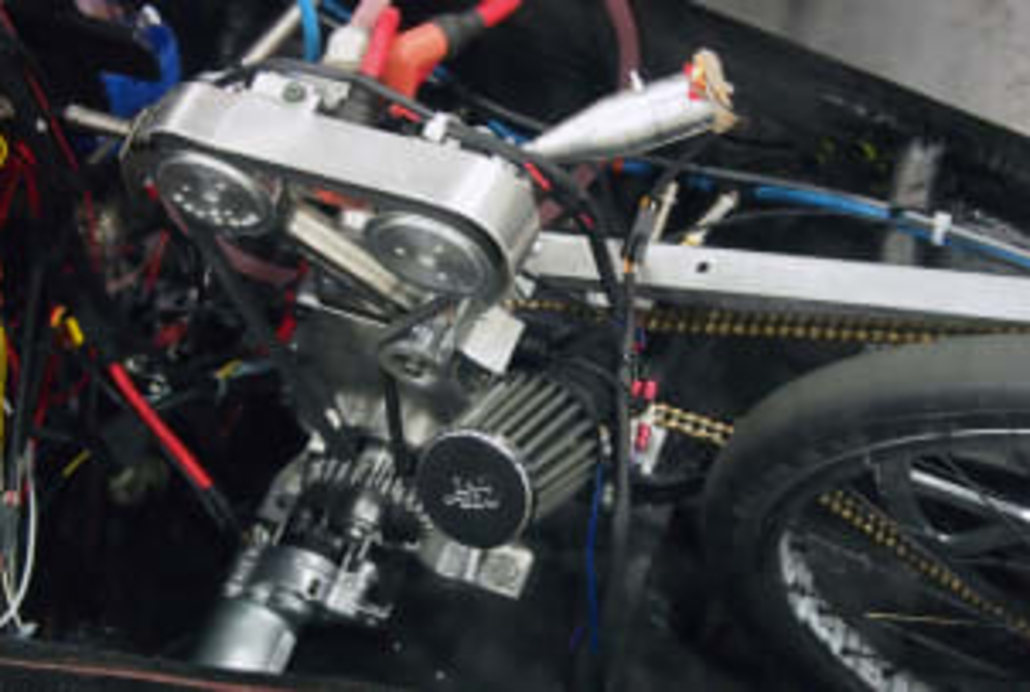
The University of Toronto team is entirely happy with their second-place finish, though, because of how they achieved it. Hamway said that the small, off-the-shelf engines that most teams in the liquid fuel categories use are designed for max power with the lowest possible manufacturing cost. The Toronto students thought that was a bad powerplant for a supermileage vehicle, so they built an entirely new engine, one that was completely focused on efficiency.
The Eco-marathon is a completely different ball game than the one Mazda is playing with its mass-market Skyactiv engines, but it's still fun to compare numbers. The direct injection gasoline engines the Japanese automaker uses get an incredibly high 14:1 compression ratio, the highest in the industry. Toronto's port injection engine gets 15.4:1 compression with 87 octane gas and no knock. Next year, the goal is 16.5:1.
You may say that's crazy talk, but the Toronto team knows that anything is possible. Last year, as a brand new team, they didn't even manage to finish or get an official time. "It was a big fail on our part," Hamway said. So, for 2014, they rethought everything. With a second-place finish under their belt, this second-year team is already working on ideas to improve for 2015.
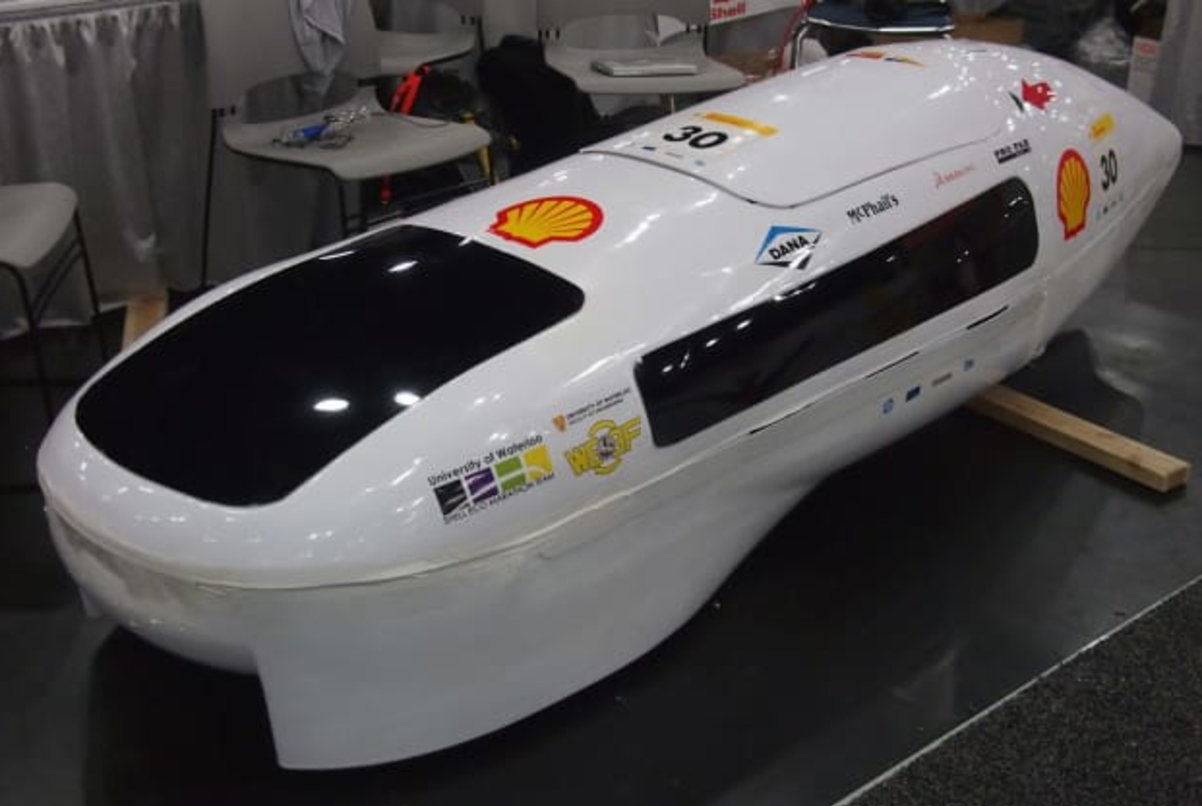
It's good to be positive, because a lot of the EV teams had trouble on the track. Of the 42 EVs entered in this year's Eco-marathon, only 14 drove away with an official mpg result. Adrian Jurgens, Shell Eco-Marathon Americas technical manager, admitted that the motor controller rule change was meant to increase technical challenge in the EV category. It's quite simple to build an EV with off-the-shelf components, he said - the teams can still use off-the-shelf motors, battery managment systems and battery packs - but building a circuit board proves you are operating at a higher level. "It doesn't take much to get the circuits crossed," he said, "and that kills it." He said that the solution is to be equipped to make repairs on site, again proving that you know your stuff. This was not possible for Waterloo, but there's always next year. You can read all the official Eco-marathon rules here.

On-site learning was indeed possible for the driver of car #71 from the Milwaukee School of Engineering. Lauren Goulet, a freshman in mechanical engineering, said she was "Nervous, but also excited," as we caught up with her at the refueling tent right before her third time getting behind the wheel in Houston. Her nervousness was understandable, since she only had an hour or so of testing before the team got to Texas.
The drivers are often in communication with teammates stationed around the course that circles Discovery Green park. Goulet had her cell phone headset duct taped to her ear so it wouldn't fall out during the drive. Her teammate Karl Hundt, a sophomore in mechanical engineering said that, "at least 50 percent of being efficient is the driver," so the MSOE team looked over the track and decided where they wanted Goulet to drive a straight line and where to turn. They set up a plan of when to burn and when to coast the prototype class gas car, and kept modifying that throughout the weekend.

The students from Louisiana Tech University communicate with their driver in a different way: ultra-loud cheering. Seth Anderson, a junior in mechanical engineering in his third year with the team, said they're just trying to bring the LA Tech culture to the Eco-marathon. Anderson piloted the team's Diesel Dawg to 184.47 mpg this year, and the cheering inspired him on to, "try a little harder, do the best I can. It's really encouraging." The car had a new clutch that was geared for higher top speeds. He had to accelerate slowly, but once he got going, he easily hit 25-28 miles per hour, which he said he hoped would let him cruise to better efficiency.
Next year, Shell is introducing a CNG class, and Anderson said LA Tech will bring a natural gas vehicle. The reason is obvious, since natural gas is a "huge industry" in northern Louisiana, where the school is located. Three vehicles attempt the course using the one new fuel for 2014 – gas-to-liquid, or GTL – but none of them actually finished.
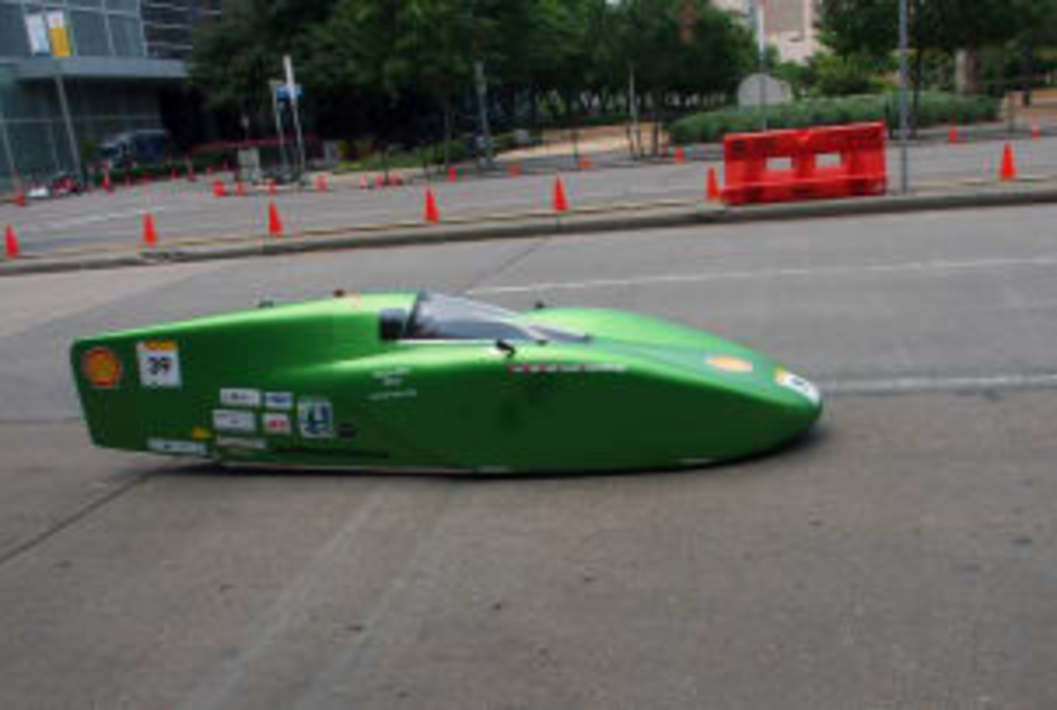
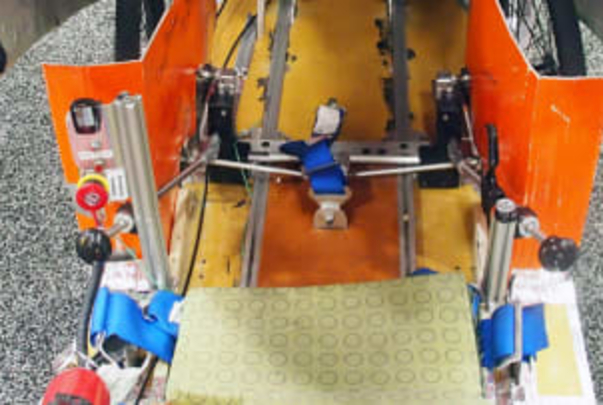
Above the exit from the air conditioned paddocks that bustled with the sound of power tools and stressful discussions all weekend long there was a sign that read "See you in Detroit!" The big news for the Eco-marathon itself is that it will be leaving its home for the past five years and trek north. There were a few Michigan schools down in Texas this weekend, scouting, if you will, for when the event takes place at Cobo Hall in 2015. David Bindon, a junior at University of Detroit Jesuit, said that, "We're very excited for [the Eco-marathon in Detroit]," if for no other reason than it'll give his team a bit of an edge. In the last two weeks before the contest in Houston, the UDJ team had to spend a lot of time building crates to ship the team's two cars south. When the event is local, that won't be necessary. Plus, of course, friends, family and fellow students will be able to come watch.
The University of Detroit Mercy let the UDJ team use its engineering department to work on the car this year, but that might not be possible next year, since Mercy is thinking about getting its own team involved, and many others could follow suit. "It is the Motor City," Bindon said.
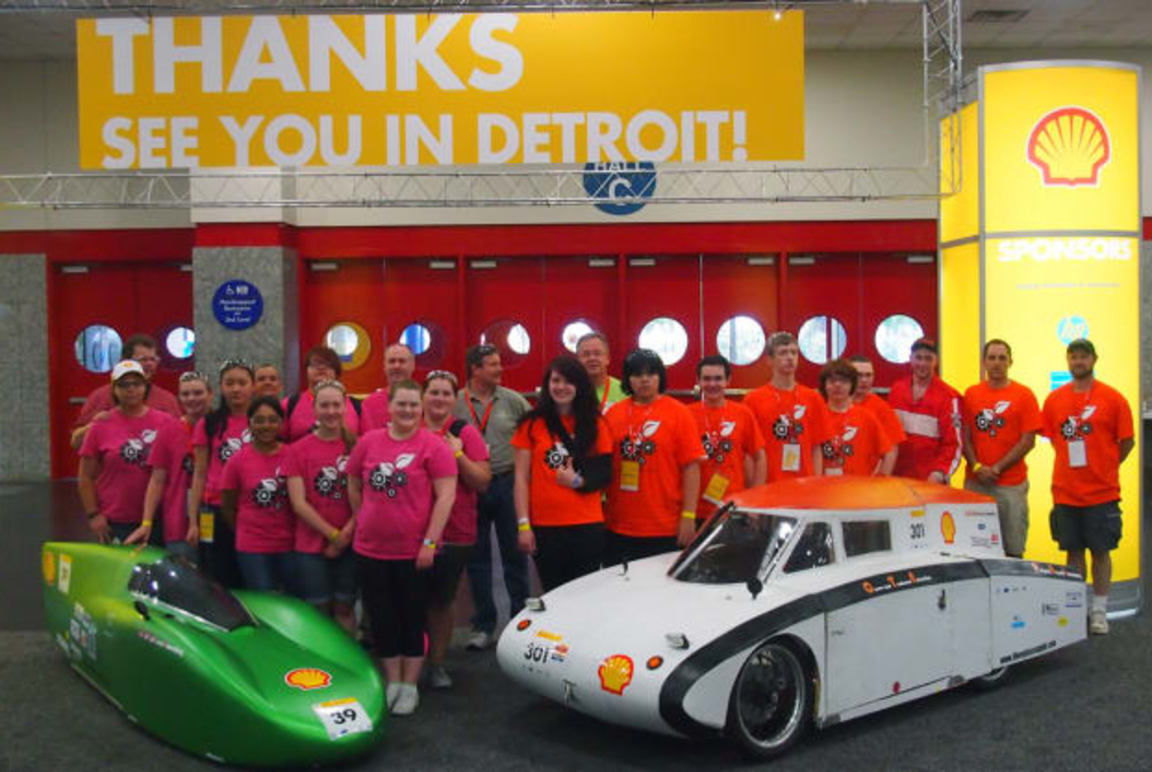
There were first-time teams, there were veterans. There were schools that took inspiration from the movies with cars based on Back To The Future and the Indiana Jones movies and some that went for the most efficient shape they could CAD. There was a middle school student who talked her way onto a high school team. There were seniors giving the Eco-marathon one last go before graduation. There were failures everywhere but also a whole lot of successes.There were failures everywhere but also a whole lot of successes.
This year, we thought we'd learn a bit more about the students and their stories. Last year, we reported an in-depth story on how the Eco-marathon works, which you can read here. Basically, to recap, the students try to expend the least amount of energy while covering the most distance. Within the rules, which emphasize safety, there is a lot of freedom for the teams to experiment, which is why you see all sorts of vehicles running around the track. Not a lot has changed, ruleswise, from last year, aside from the addition of gas-to-liquid as a possible fuel and a rules change for EVs that we'll get to in a moment. You can find the complete 2014 results here, but the headline number is that Laval University, from Canada, won the gasoline prototype category with 2823.41 miles per gallon. The University of Toronto Supermileage team was close behind with 2711.97 mpg. Given the distances covered and the way the small amount of fuel burned gets measured, that's basically a tie. That's how the Toronto team tells it, anyway.
Jonathan Hamway is a fourth-year mechanical engineering student at the University of Toronto. He's the one who told me that the difference between the two teams is decidedly minor. The difference in the official mpg results was pretty dramatic - over 100 mpg separated Toronto from Laval - but when you're talking about the amount of fuel the cars use on the track, that's almost a measuring error. Note: no one is saying the Shell team on site wasn't measuring accurately, we're just pointing out that even a thimble of fuel makes a huge difference at the Eco-marathon.
The University of Toronto team is entirely happy with their second-place finish, though, because of how they achieved it. Hamway said that the small, off-the-shelf engines that most teams in the liquid fuel categories use are designed for max power with the lowest possible manufacturing cost. The Toronto students thought that was a bad powerplant for a supermileage vehicle, so they built an entirely new engine, one that was completely focused on efficiency.
Hamway said there are three main areas where an engine wastes energy: combustion inefficiencies, friction and heat loss. You can't conquer all of them, but the Toronto team adjusted the internal geometries and coatings as they designed an engine that would keep as much heat as possible in the chamber. After a lot of computer simulation, "everything worked exactly the way we planned" on the track, Hamway said. "This weekend, we proved that, yes, you can build a better engine.""This weekend, we proved that, yes, you can build a better engine" - Jonathan Hamway
The Eco-marathon is a completely different ball game than the one Mazda is playing with its mass-market Skyactiv engines, but it's still fun to compare numbers. The direct injection gasoline engines the Japanese automaker uses get an incredibly high 14:1 compression ratio, the highest in the industry. Toronto's port injection engine gets 15.4:1 compression with 87 octane gas and no knock. Next year, the goal is 16.5:1.
You may say that's crazy talk, but the Toronto team knows that anything is possible. Last year, as a brand new team, they didn't even manage to finish or get an official time. "It was a big fail on our part," Hamway said. So, for 2014, they rethought everything. With a second-place finish under their belt, this second-year team is already working on ideas to improve for 2015.
That's just the kind of trajectory that the University of Waterloo hopes to reach with its battery electric prototype. This was the first year that Waterloo participated in the Eco-marathon and their faculty adviser suggested they build an EV because that electric technology is the simplest way to start. Once they got to Houston, they ran afoul of the new rule this year that hit all teams fielding EVs. Previously, these cars could be built with an off-the-shelf motor controller, but this year, they had to purpose-build their own. The Waterloo students managed to do this, developing a $3,500 circuit board and getting the motor controller built in a matter of weeks, but, sadly, it burned out on Saturday. Like so many others, they did not finish with an official mpg rating. Matt Long, a third-year mechanical engineering student, said the Waterloo team did not feel too depressed with the non-result result, in part because they knew how much Toronto improved from 2013 to 2014. With an unofficial mpg rating that would have put the team into third-ish place this year and a lot of positive comments from the other teams on how fast the Waterloo car came together – it was in pieces two weeks ago – "It's been kind of an ego boost," Long said."It's been kind of an ego boost" – Matt Long
It's good to be positive, because a lot of the EV teams had trouble on the track. Of the 42 EVs entered in this year's Eco-marathon, only 14 drove away with an official mpg result. Adrian Jurgens, Shell Eco-Marathon Americas technical manager, admitted that the motor controller rule change was meant to increase technical challenge in the EV category. It's quite simple to build an EV with off-the-shelf components, he said - the teams can still use off-the-shelf motors, battery managment systems and battery packs - but building a circuit board proves you are operating at a higher level. "It doesn't take much to get the circuits crossed," he said, "and that kills it." He said that the solution is to be equipped to make repairs on site, again proving that you know your stuff. This was not possible for Waterloo, but there's always next year. You can read all the official Eco-marathon rules here.
On-site learning was indeed possible for the driver of car #71 from the Milwaukee School of Engineering. Lauren Goulet, a freshman in mechanical engineering, said she was "Nervous, but also excited," as we caught up with her at the refueling tent right before her third time getting behind the wheel in Houston. Her nervousness was understandable, since she only had an hour or so of testing before the team got to Texas.
The drivers are often in communication with teammates stationed around the course that circles Discovery Green park. Goulet had her cell phone headset duct taped to her ear so it wouldn't fall out during the drive. Her teammate Karl Hundt, a sophomore in mechanical engineering said that, "at least 50 percent of being efficient is the driver," so the MSOE team looked over the track and decided where they wanted Goulet to drive a straight line and where to turn. They set up a plan of when to burn and when to coast the prototype class gas car, and kept modifying that throughout the weekend.
The students from Louisiana Tech University communicate with their driver in a different way: ultra-loud cheering. Seth Anderson, a junior in mechanical engineering in his third year with the team, said they're just trying to bring the LA Tech culture to the Eco-marathon. Anderson piloted the team's Diesel Dawg to 184.47 mpg this year, and the cheering inspired him on to, "try a little harder, do the best I can. It's really encouraging." The car had a new clutch that was geared for higher top speeds. He had to accelerate slowly, but once he got going, he easily hit 25-28 miles per hour, which he said he hoped would let him cruise to better efficiency.
Next year, Shell is introducing a CNG class, and Anderson said LA Tech will bring a natural gas vehicle. The reason is obvious, since natural gas is a "huge industry" in northern Louisiana, where the school is located. Three vehicles attempt the course using the one new fuel for 2014 – gas-to-liquid, or GTL – but none of them actually finished.
The first all-girls team in the Eco-marathon Americas, the Granite Falls ShopGirls, has been participating since 2009. This year, their sleek, green, diesel-powered bullet hit 493 mpg. Kelsey Green, an 8th grader, got a special exception to join the high school team. Showing an incredible ability to look forward, she said she wants to be a design engineer and thought being on the team would teach her skills that will be useful in her dream job. Remember, she's in junior high. For the car, which is all new this year, she helped come up with the bottom plate and the frame. "We were thinking about weight, how aerodynamic it was," she said. One clever idea the team had was to use knobs instead of a steering wheel. They operate like levers, Green said, and allow the driver to turn the car without moving her arms much. It also makes it a lot easier to get in and out of the low-to-the-ground. Granite Falls also sent a co-ed team (called UrbanAutos), which managed 288 mpg.One clever idea the team had was to use knobs instead of a steering wheel.
Above the exit from the air conditioned paddocks that bustled with the sound of power tools and stressful discussions all weekend long there was a sign that read "See you in Detroit!" The big news for the Eco-marathon itself is that it will be leaving its home for the past five years and trek north. There were a few Michigan schools down in Texas this weekend, scouting, if you will, for when the event takes place at Cobo Hall in 2015. David Bindon, a junior at University of Detroit Jesuit, said that, "We're very excited for [the Eco-marathon in Detroit]," if for no other reason than it'll give his team a bit of an edge. In the last two weeks before the contest in Houston, the UDJ team had to spend a lot of time building crates to ship the team's two cars south. When the event is local, that won't be necessary. Plus, of course, friends, family and fellow students will be able to come watch.
The University of Detroit Mercy let the UDJ team use its engineering department to work on the car this year, but that might not be possible next year, since Mercy is thinking about getting its own team involved, and many others could follow suit. "It is the Motor City," Bindon said.
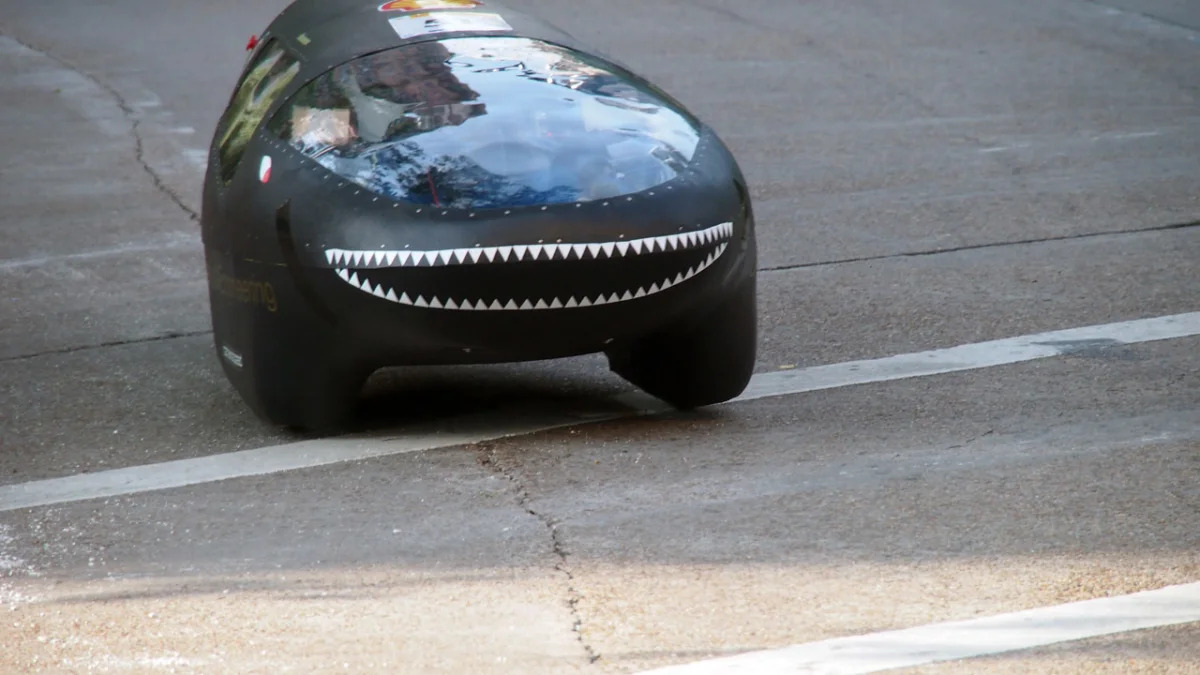









Sign in to post
Please sign in to leave a comment.
Continue